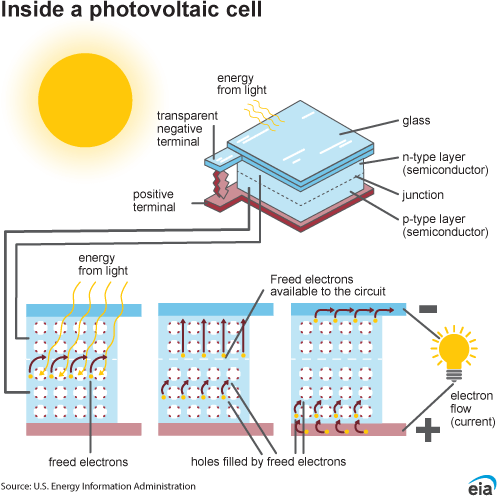Photovoltaic (PV) Technology
PV technology describes the processes solar panels use to create electricity. A solar panel works by placing solar cells, usually using silicon, in areas that are sunny. As a result of this energy, the electrons inside the semiconductor begin to flow and form a direct current (DC). Solar modules (or panels) are composed of several different cells, while several of them can be wired together to create a solar array. A variety of PV systems are available. A grid connection allows people with solar panels to use electricity from the utility and to actually send excess power back to the grid through net metering. In order to function alone from the utility grid, off-grid systems usually rely on battery storage and can be found regularly in places that are far from the main grid. PV technology can be used locally for residential homes by putting panels on the roof or it can be used on a large scale by a business that installs them outside or on its rooftop. People can expect their electricity bills to go down, it helps the environment by working on clean power and people can depend less on others for their sources of energy. Improvements in PV technology are causing solar energy to cost less, last longer and generate more power, drawing more people to it.

PV cells use energy from the sun to generate electricity.
Image Citation: https://www.eia.gov/energyexplained/solar/photovoltaics-and-electricity.php

